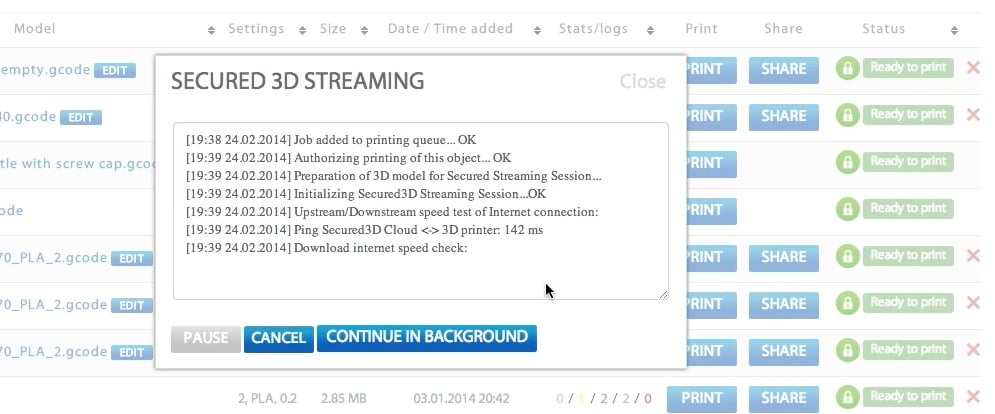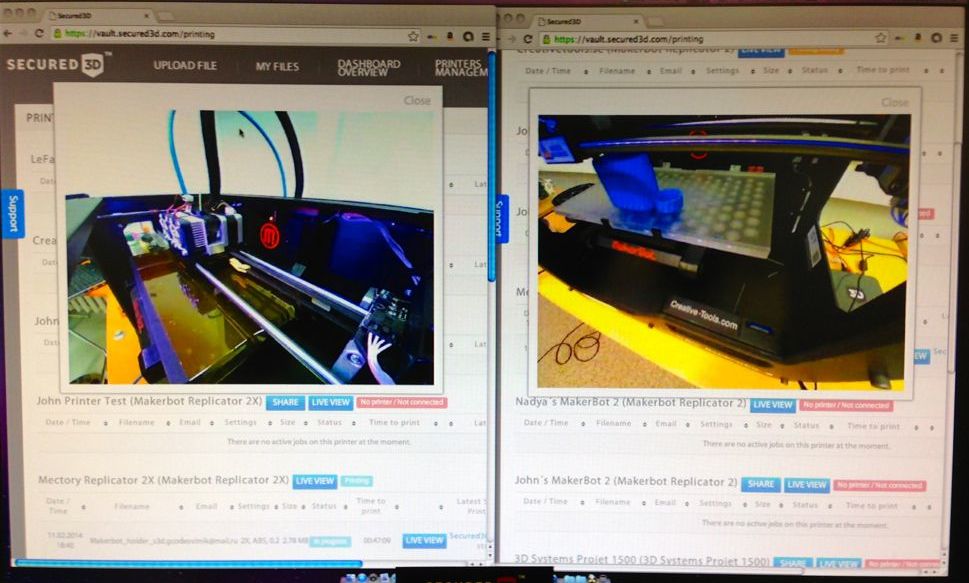
A new service could provide a secure solution for for securely 3D printing. But what does that mean?
Before we get into the service provided by Secured3D, you might want to know why one would even need secure 3D printing. The cause is actually file formats. Your 3D model files are converted into GCODE by a 3D printer’s slicing software. The GCODE actually instructs the printer to make the object.
So if you had possession of the GCODE file you could 3D print as many copies as you like. In effect, you’d “own” the object. You could even give the GCODE away to others. Or sell it.
That’s bad for anyone who wants to retain ownership of a carefully created object design. But those same designers do occasionally want people to 3D print their designs. How can they do so securely?

That’s where Estonia-based Secured3D’s service comes in. They offer a cloud-based repository where STL and GCODE can be securely stored. That part’s not new, but their method of delivery is: the GCODE is streamed in encrypted form directly to network-attached printers for production. The GCODE file itself is never transmitted in a way that someone could keep it.
This means an object in the repository could be safely released for “one print”, for example. Artists could use this tech to securely sell limited quantities of their complex works without fearing loss of their design. Artists can also optimize the 3D printing parameters for specific machines to ensure quality results consistently occur, reducing repeated print attempts.
While personal use of the secure repository seems to be free of charge, Secured3D charges large amounts (more than six figures USD) to companies wishing to establish their own internal secure 3D printing cloud using a black box server solution supplied by Secured3D. Once established, a company could manage versions of newly designed parts to ensure they are not sent outside the company, for example. Companies can also electronically send (print) limited copies of samples to other countries, thus avoiding duties and taxes that would have been incurred by shipping physical objects.

We’ve seen the system apparently working, with network connected 3D printers equipped with webcams showing print progress. But is there a catch? Yes, possibly two.
First, it is theoretically possible to capture the GCODE stream using network tools. If the encryption is insufficient, it may be possible to obtain a ready-to-use copy of the GCODE anyway. It may also be possible to intercept the unencrypted GCODE at the 3D printer itself.
Secondly, we see a press release from another Estonian company, Fabulonia, which claims infringement of their intellectual property. The release says an Estonian court has issued a preliminary injunction against Secured3D. It’s not exactly clear what’s happening here.
Regardless, Secure3D is apparently open for business. Check them out!

